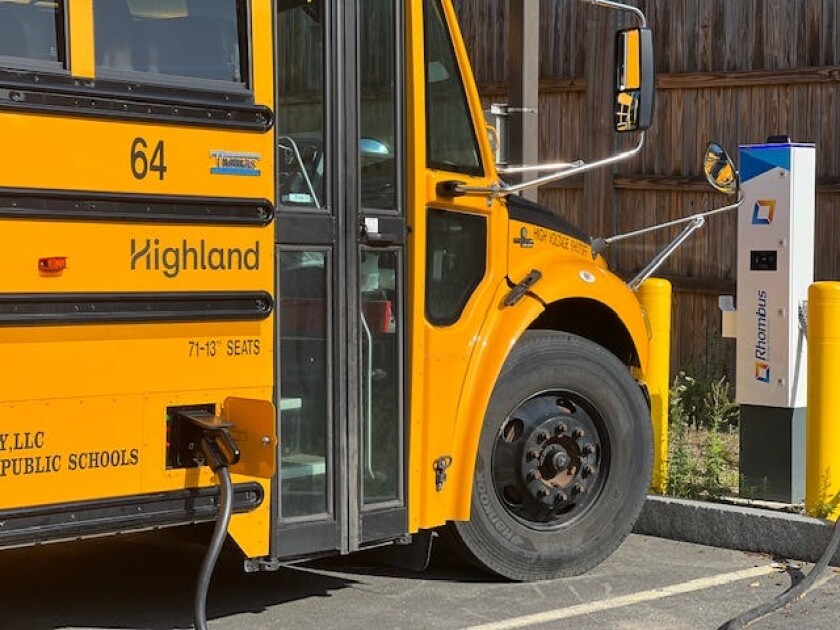Case in point: claims by some in Congress that federal government support for electric school buses is a ploy to help the Chinese Communist Party (CCP).
While China does have an advantage when it comes to battery manufacturing, something Democrats and Republicans in Congress have sought to address, the majority of electric school bus components are made in the United States. Further, the Infrastructure Investment and Jobs Act, and the Clean School Bus program authorized by it, both explicitly require compliance with the Build America, Buy America program’s domestic content requirements.
Unsubstantiated claims about e-buses somehow helping the CCP distract from the clear advantages of modernizing our school bus infrastructure and only serve as political theater for some lawmakers to energize a certain segment of their base.
Focusing on common-sense policy solutions over politics, several school districts in my home state of Maryland have made commitments to transition from aging diesel buses to cleaner, quieter electric buses. In fact, Maryland ranks third in the total number of electric buses ordered.
Some are taking a cautious approach, with pilot programs and admirable, measured goals to transition fully to electric buses several years down the road. Others, like Montgomery County, Md., have set more ambitious targets. The county’s schools are already operating more than 220 electric buses — the largest fleet in the country — and have a goal to transition all 1,300 of buses to electric by 2030.
It doesn’t take a rocket scientist to understand why these school administrators — both Democrats and Republicans — have expressed support for making this transition.
First, it’s in our communities’ best interest to keep residents healthy.
While it’s common knowledge that breathing in diesel puts even healthy people at greater risk of asthma and respiratory illnesses, it’s less known that the air quality inside a diesel bus is five times worse than that outside. Considering that nearly 1 in 13 Maryland kids suffer from asthma, and a disproportionately higher rate of Black children are hospitalized because of it, transitioning away from diesel engines is doing right by our kids.
Second, it’s the right thing to do for the environment.
Replacing one diesel bus can reduce greenhouse gas emissions by as much as much as 54,000 pounds annually. With climate change becoming a front-burner issue and the most significant challenge our children will face in their lifetimes, the least we can do is begin setting the right example for them in their schools.
Third, it’s the fiscally conservative thing to do.
Of course , there are some upfront costs associated with the transition to electric school buses. Recognizing that, the federal government and some states have made funds available to help cash-strapped districts pay for buses. And available data overwhelmingly demonstrates that electric buses will quickly save localities significant sums, because they have far lower fuel and maintenance costs.
One study found that electric buses could save between $73,000 and $173,000 per unit over their lifetimes. A Department of Energy study similarly projected hundreds of thousands of dollars’ in savings for a city that invested in four electric buses and four charging stations.
Schools receive cost savings, too, with one study showing that replacing one diesel bus with an electric one reduces operation and maintenance costs a full 60 percent.
People concerned about making the transition to electric-powered buses may not have all the facts regarding the health and environmental benefits of making this transition (which are unimpeachable) but challenge point three, the economic advantages. Sometimes they are equipped with out-of-context statistics on vehicle delivery delays and repair issues, thus making the case that our tax dollars would be better spent elsewhere.
While it’s imperative to ensure today’s limited public-school funds are used prudently, for people who argue that schools shouldn’t make the transition to e-buses due to upfront costs I would recommend they take a little more time to review all the facts.
Imagine if the U.S. military refrained from ever upgrading its technology because of the startup investments required? We would have lost every foreign conflict we faced, and our military would have never become the most professionalized and powerful force on the planet.
With our country facing unprecedented budgetary and environmental crises, we should look at upgrading our vehicles the same way that we look at strengthening our military. An ounce of prevention is worth a pound of cure, and this one will yield us lower costs, cleaner communities and healthier kids.
As I often say on television, take the win.
Political commentator Michael Steele served as lieutenant governor of Maryland from 2003 to 2007 and as chair of the Republican National Committee from 2009 until 2011. This commentary originally appeared in Maryland Matters, part of the States Newsroom network. Read the original here.
Governing's opinion columns reflect the views of their authors and not necessarily those of Governing's editors or management.
Related Articles













